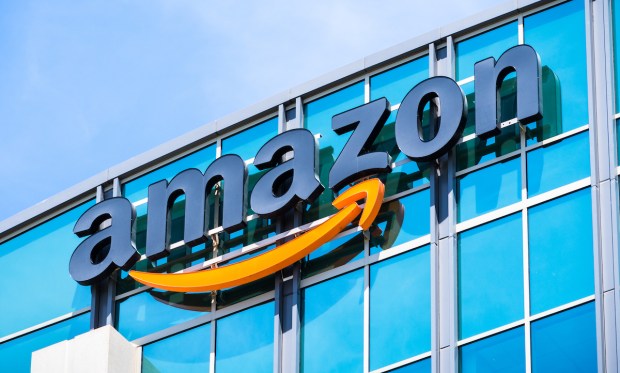Amazon’s Ecosystem Gains Traction as Third-Party Sellers Revenue Soars 18.1%

Amazon’s movement to create a commerce ecosystem well beyond simply logging sales on its platform showed up in second-quarter earnings results, as sales gleaned from its third-party sellers segment soared by 18.1% to $32.3 billion.
Presentation materials from the company showed that sales at its physical stores were up 6% year on year to $5 billion.
And, in reference to the overall trends of what consumers are buying, Chief Financial Officer Brian Olsavsky said on a conference call with analysts that, in terms of the macro environment, “customers [are] trading down and seeking value in their purchases.”
Online store sales showed 4% growth, coming in at just under $53 billion in the second quarter. Subscription services revenues surged 14% to $9.9 billion.
Total net sales of $134.4 billion represented 10.8% growth, and investors sent the shares 9% higher at market open Friday (Aug. 4).
As management discussed on the call, the company continues to execute on its strategy to streamline its fulfillment and logistics efforts.
Amazon CEO Andy Jassy said during the call that progress is being made to transition Amazon stores’ fulfillment and transportation network from one national network in the United States to a series of eight separate regions serving smaller geographic areas.
“Regionalization is working and has delivered a 20% reduction in number of touches for our delivered package, a 19% reduction in miles traveled to deliver packages to customers, and more than a 1,000-basis-point increase in deliveries fulfilled within region,” Jassy said.
“So far this year, we’ve delivered more than 1.8 billion units to U.S. Prime members the same or next day, nearly four times what we delivered at those speeds by this point in 2019,” he added.
Amazon Web Services (AWS) logged 12% sales growth to $22.1 billion. Companies are showing their desire to gain access to large language models (LLMs) and artificial intelligence (AI), Jassy said on the call.
“Amazon Business is one of our fastest-growing offerings with a $35 billion annual gross sales run rate,” he said.
With a nod to third-party seller efforts and the initiative earlier this year to expand Buy with Prime, management said on the call that merchants in early trials who use Buy with Prime saw their shopper conversion increase by 25% on average.
Elsewhere, the company has doubled its Amazon Pharmacy active customers.
Grocery Revamp and What Happens Next
“Our grocery business continues to grow,” Jassy said.
And as Amazon continues to leverage its fulfillment network, it will be able to, in Jassy’s words, “inject” more grocery items into its same-day facilities to boost “the number of items that people can add at the last minute… and you’ll see more of that moving forward.”
Later in the call, he said the company has a significant business in nonperishables, but there will be a need for a “strong physical presence.”
The re-tooling of its physical (Amazon Fresh) segment is ongoing, said Jassy, and Amazon is adding private brands to the mix.
“The team has made up a lot of improvements,” he said. “We have spent a lot of time thinking and rethinking how we want the formats to look.”
He added: “We’re not going to expand the number of Fresh stores in a very significant way until we believe we have something that is resonant with customers and that we’re going to like the return on invested capital.”
For all PYMNTS retail coverage, subscribe to the daily Retail Newsletter.

